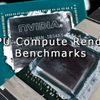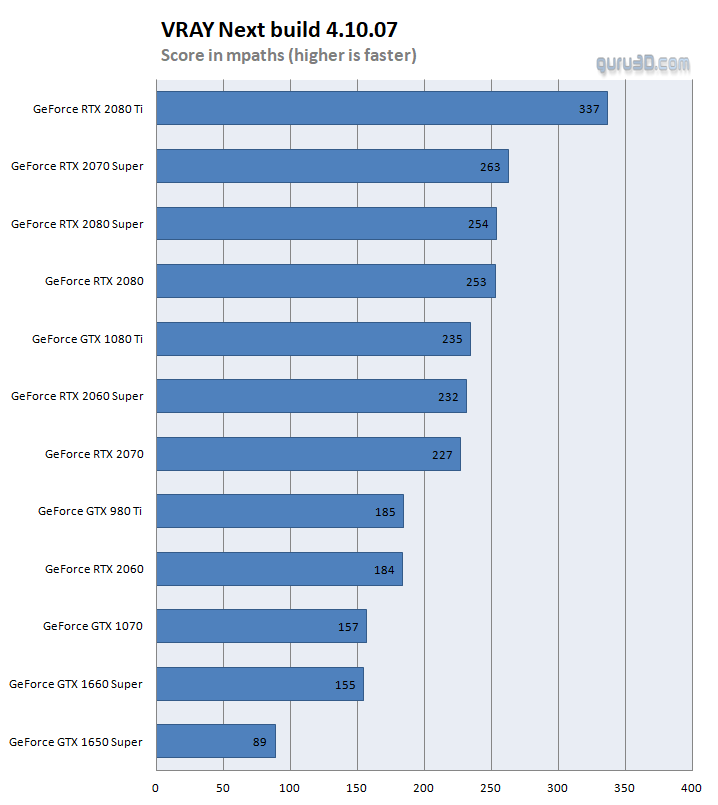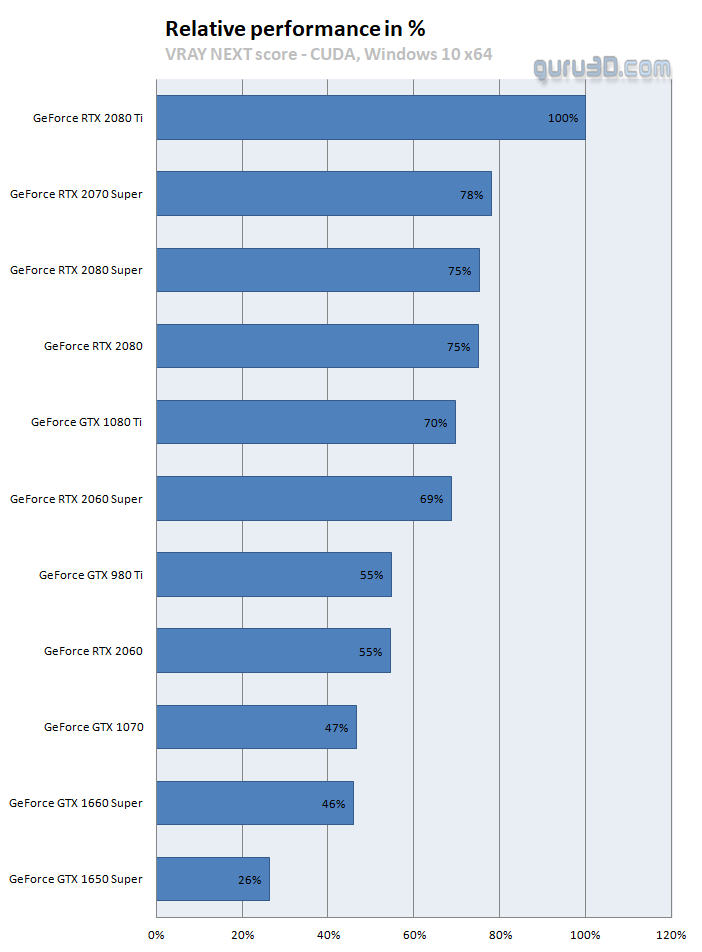Article Page 2 - IndigoBench 4.0 and VRAY Next
GPU Performance: IndigoBench 4.0
In this article, we'll test the three content rendering titles with twenty graphics cards, and see what that brings us in performance.
Test environment (system specification)
Our graphics card test system is based on an eight-core Intel Core i9 9900K processor on the Z390 chipset platform. Next, to that, we have energy-saving functions disabled for this motherboard and processor (to ensure consistent benchmark results). We use Windows 10 all patched up. Each card runs on the same PC with the same operating system clone.
System Spec
- Core i9 9900K
- Z390 (ASRock Tachi Ultimate)
- 32 GB DDR4 3200 MHz CL16
- NVMe M.2. SSD WD Black
Graphics drivers
- GeForce graphics cards use the 442.19 (download).
- Radeon graphics cards we used the latest AMD Radeon Adrenalin 20.2.1 driver (download).
Graphics cards used
- GeForce GTX 1070
- GeForce GTX 1080 Ti
- GeForce GTX 1650 Super
- GeForce GTX 1660 Super
- GeForce GTX 980 Ti
- GeForce RTX 2060
- GeForce RTX 2060 Super
- GeForce RTX 2070 Super
- GeForce RTX 2080
- GeForce RTX 2080 Super
- GeForce RTX 2080 Ti
- Radeon R9 390X
- Radeon RX 5500 XT
- Radeon RX 5600 XT
- Radeon RX 5700
- Radeon RX 5700 XT
- Radeon RX 590
- Radeon RX Vega 56
- Radeon RX Vega 64
- Radeon VII
We start off with Indigo. IndigoBench offers a standalone benchmark application based on Indigo 4's advanced rendering engine, useful for measuring the performance of modern CPUs and GPUs. Due to the use of industry-standard OpenCL, a wide variety of GPUs from NVIDIA, AMD, and Intel are supported. That also means that this title is creating an equal playing field for all brands, as CUDA, for example, is not triggered automatically with GeForce GPUs.
If you are looking for a pure 1:1 comparison on OpenCL performance, this render application probably offers the best of the compute arena with OpenCL performance with rendering as workload. We render a Supercar here. It is fair to state that NVIDIA has got an upper hand in performance here.
And of course, normalized in percentages the performance overview among the cards OpenCL wise gives a bit more perspective.
GPU Performance - Vray NEXT
V-Ray is a stand-alone application to test how fast your hardware renders. The results are displayed in Mpaths per second. The standalone application includes a single GPU scene and a single CPU scene. V-Ray is a computer-generated imagery rendering software application developed by the Bulgarian company Chaos Group. It is a commercial plug-in for third-party 3D computer graphics software applications and is used for visualizations and computer graphics in industries such as media, entertainment, film and video game production, industrial design, product design, and architecture.
With the release of VRAY NEXT we had hopes of OpenCL compute performance support for the Radeon platform. However, V-Ray GPU offers rendering with CUDA only. That's why you don't see the Radeon cards here. It's a very valid (and extremely good) benchmark though, so we'll continue to use it in processor and NVIDIA GPU reviews.
You will have noticed this; please note that the RTX 2070 Super (TU104) manages to outperform a 2080 Super (TU104), super weird as the latter one has the better specs. We've seen such behavior in the past and confirmed this result with other media as well, this for whatever reason happens. On the other hand, this set of tests shows that if you want value for money using Vray, I'd pretty much opt an RTX 2060 Super for the best value in a single card setup, keep in mind though the RTX 2070 super, however, has an NVLINK so with an mGPU setup, that is the next best bet. On the next page, we'll dive into a blender with a nice classroom render.





